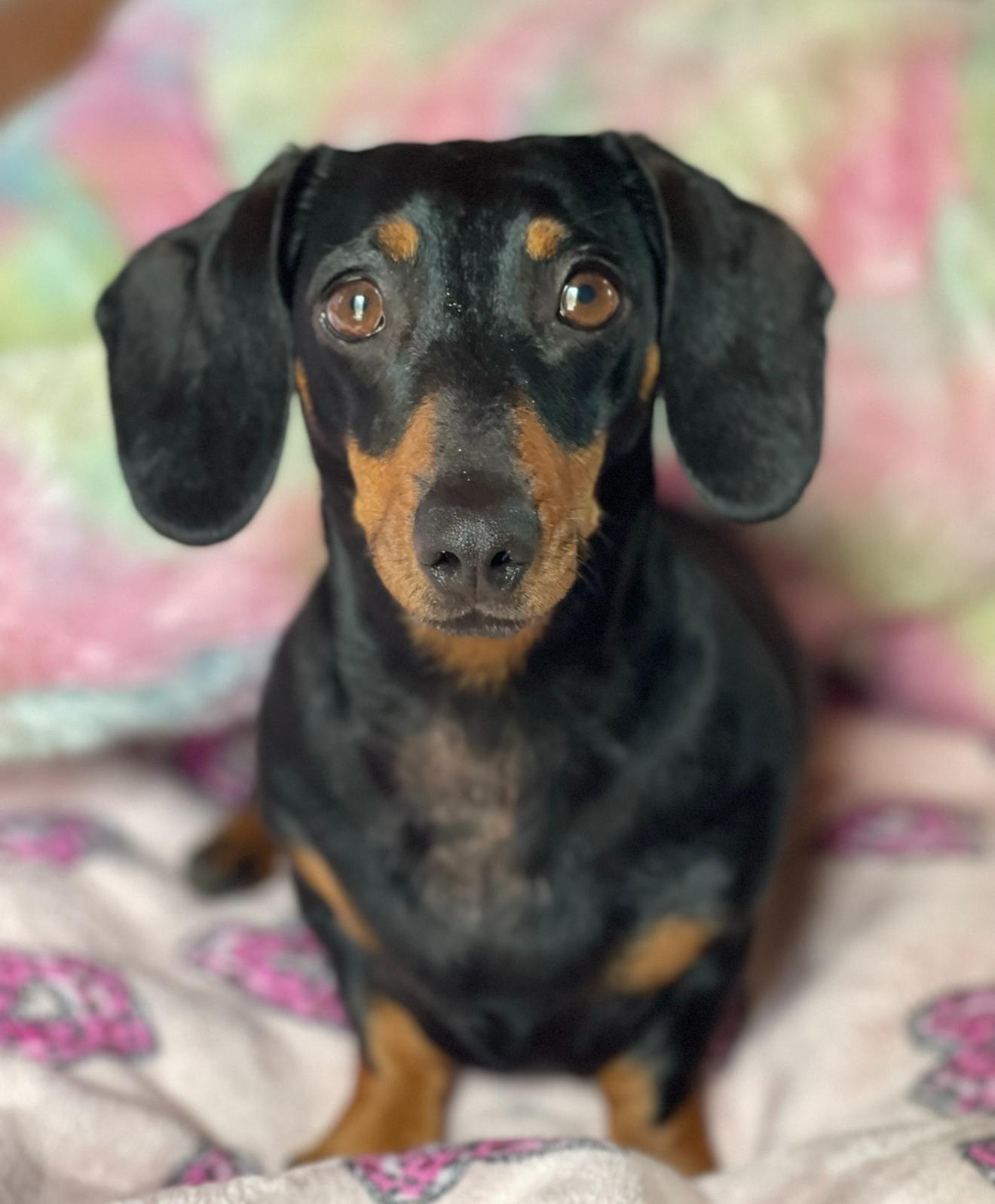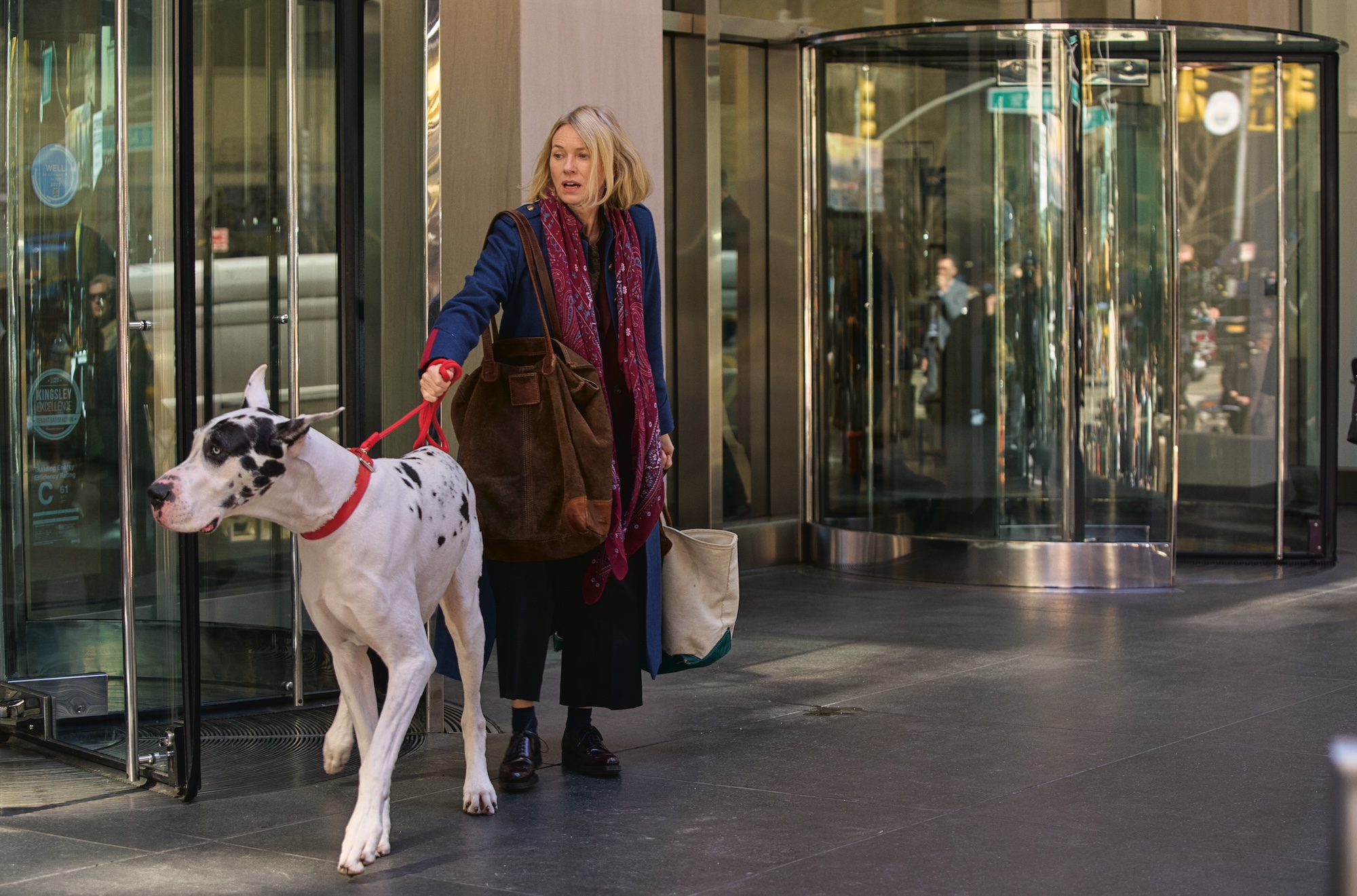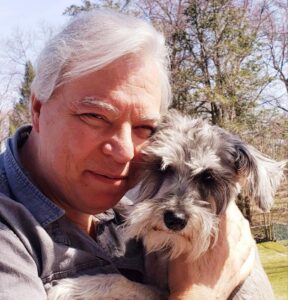
In the introduction to his recent book, Love Immortal, Anthony Cavo writes: “It is difficult to recall a time in my life when I was not involved with dogs or antiques, and especially antique photographs.” So it was natural for the antiques appraiser and dealer to fill more than 200 pages with photos of people and dogs from 1840 through 1940, along with dog trivia and stories of the human-canine bond. The images show that, almost as soon as people could take photographs at all, they were turning lenses on their dogs.
Cavo sees an implicit message in the photos of people who lived so long ago, but who have bonds with their dogs to which modern readers can relate. “The one thing I really want people to realize,” he says, “is that no matter who we are, what our politics are, whatever religion we may have or not have, dog lovers have this common bond. And when you have at least one common bond, that’s a beginning.”
Cavo—who currently lives with his brother’s dog, Buddy, and says his “new soulmate” is his sister’s dog, Maui—talked us through some of the shots in his new book and important moments in his life with dogs.
Love Immortal is available now.
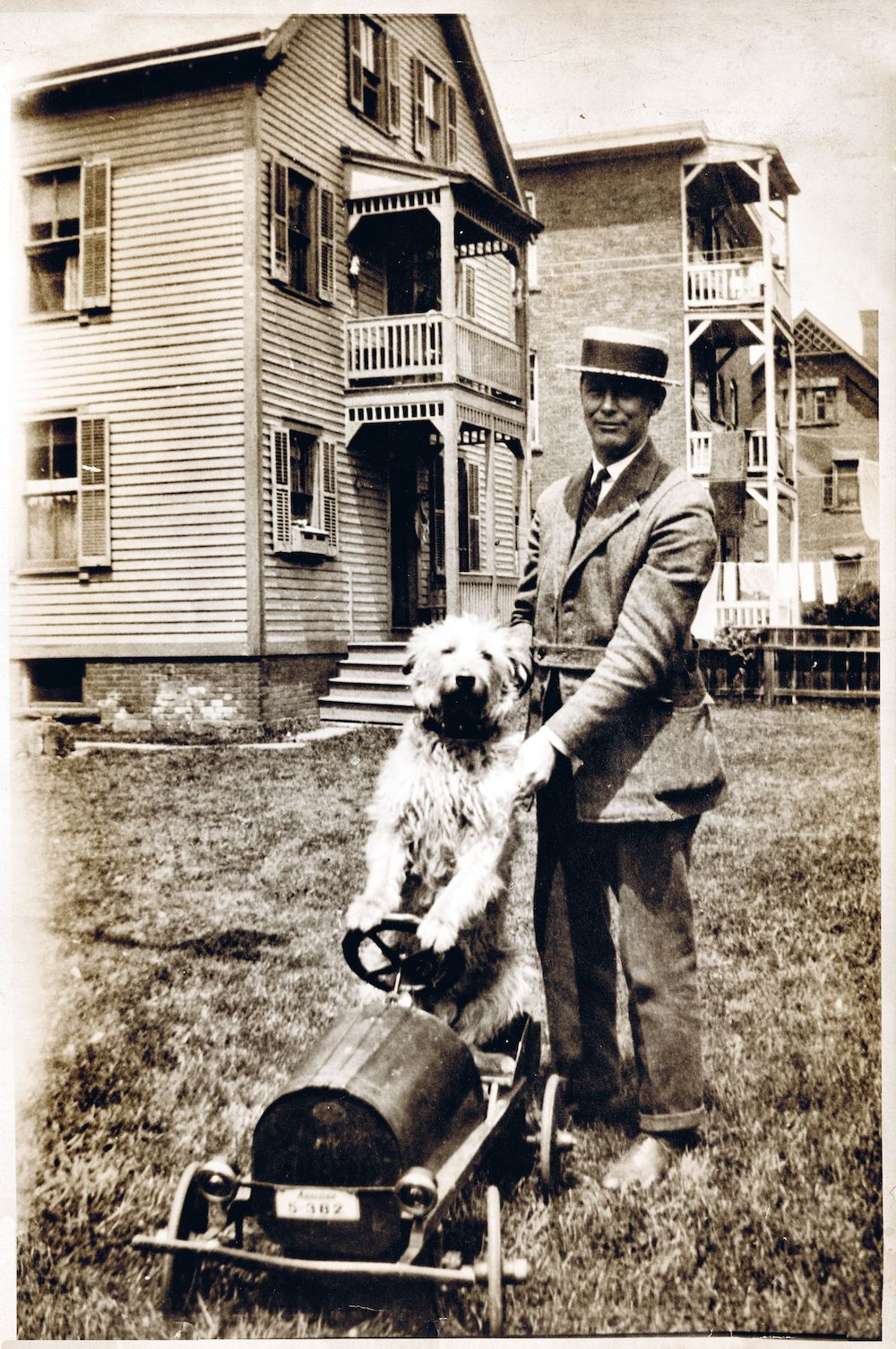
Digest: One fun picture in your book features a man posing his dog as if he is driving a car. It’s from the 1910s. Out of the photos you found, was that one unique in its silliness?
Anthony Cavo: Most of the photos I encountered were simply dogs posing on a table or a chair with their owner laying down. [This photo] was quite unique, and when I encountered [it] I just knew I had to have it.
People were always silly. And as a photograph collector, I can tell you that once the 1880s came and people were taking their own photographs, that’s when we begin to see all the silly antics—you know, people standing on their head at the beach—so I’m sure they did a lot of silly things with their dogs. There are a few [other] silly shots [in the book]. There’s one with two women dressed like clowns with their dog, and then there’s another photo of two nurses and a woman in a witch’s costume and their dog.
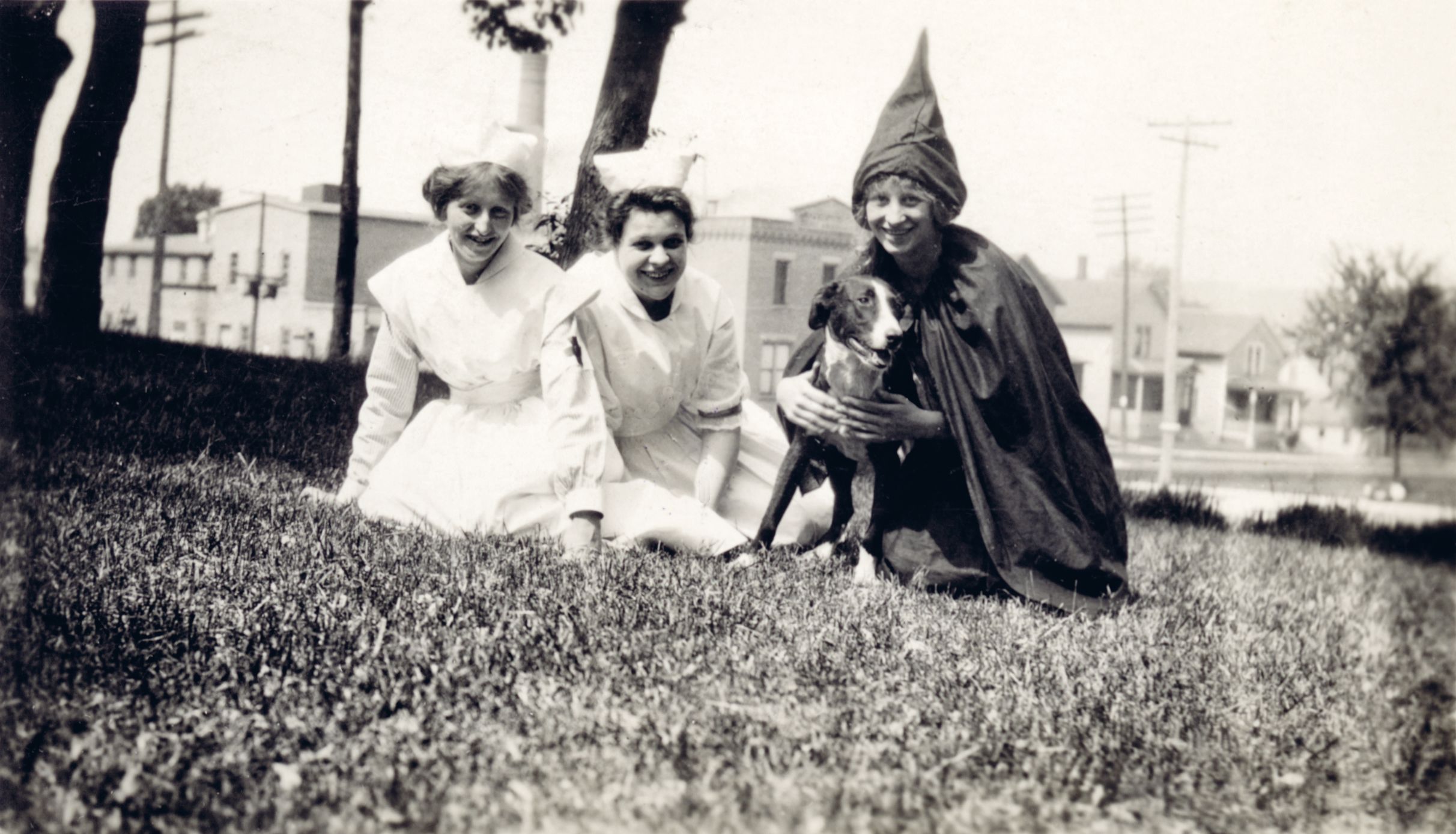
I wonder how much that man prioritized this car shot—did he have the opportunity to take a dozen photos with his dog, or did he say “this is my one opportunity, and he’s going to be driving?”
It’s quite a large photo. In person, it’s probably between 10 and 12 inches high, so that would have been costly to print. Obviously, he loved this photo and he loved his dog. In my own mind, it was a chance encounter—he came across the car with his dog—because I’m sure he didn’t buy the car for his dog.
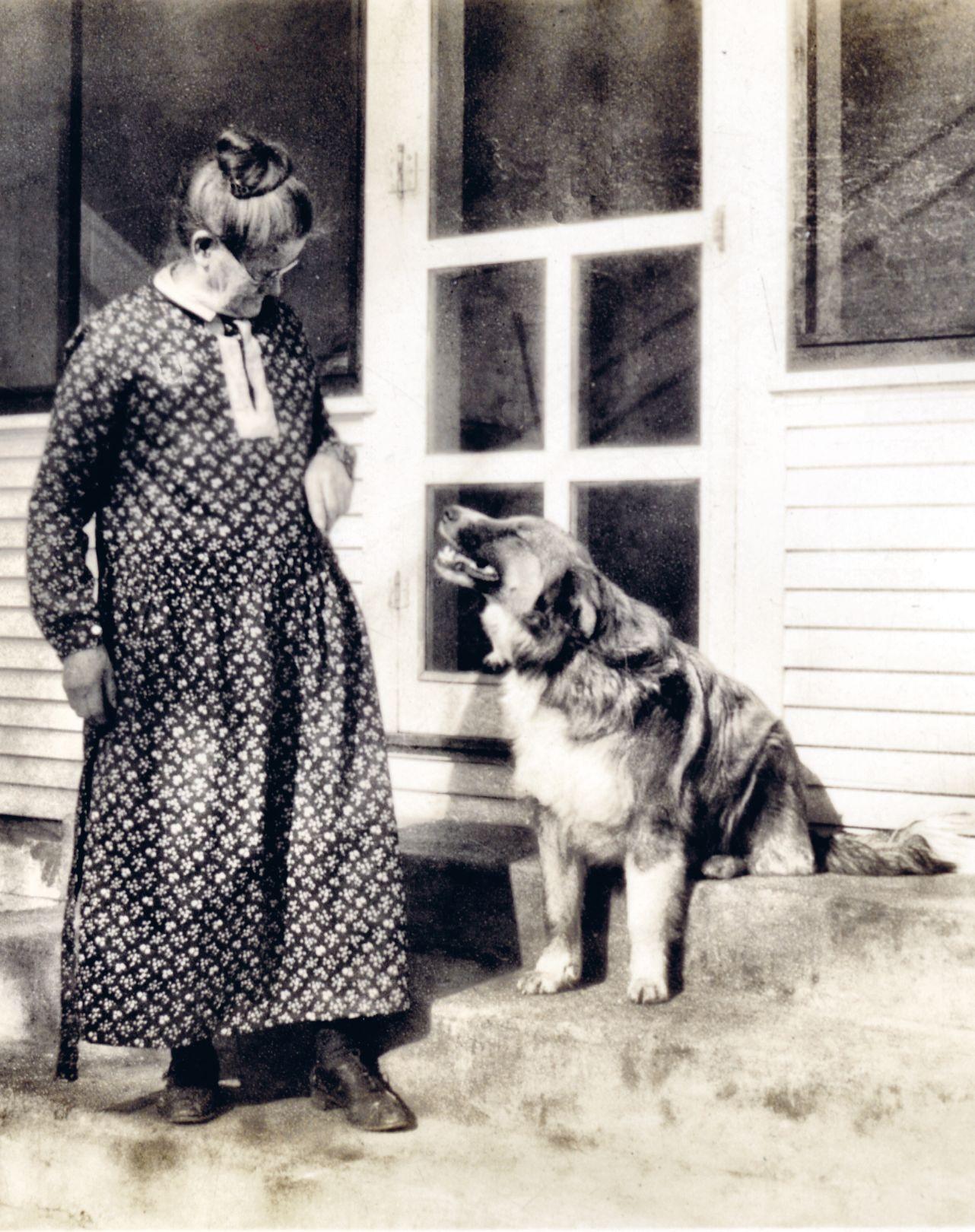
Another photo features a dog outside the door of a house looking at his human. In your caption, you note the understanding that they seem to have. Were there other looks on dogs’ faces that stood out to you?
Absolutely. The one that, when I found it, literally made the hairs on my arm stand up—there’s a photograph of a woman sitting on a stone wall. She has a bouquet of flowers in her hand. And this dog is sitting on the wall next to her and has the most adoring look that I could have possibly captured on camera. I call that photo “the look of love,” and it’s really more than that. It’s adoration. You can see the dog’s eyes are fixed on her, and it really is a heartwarming photograph.
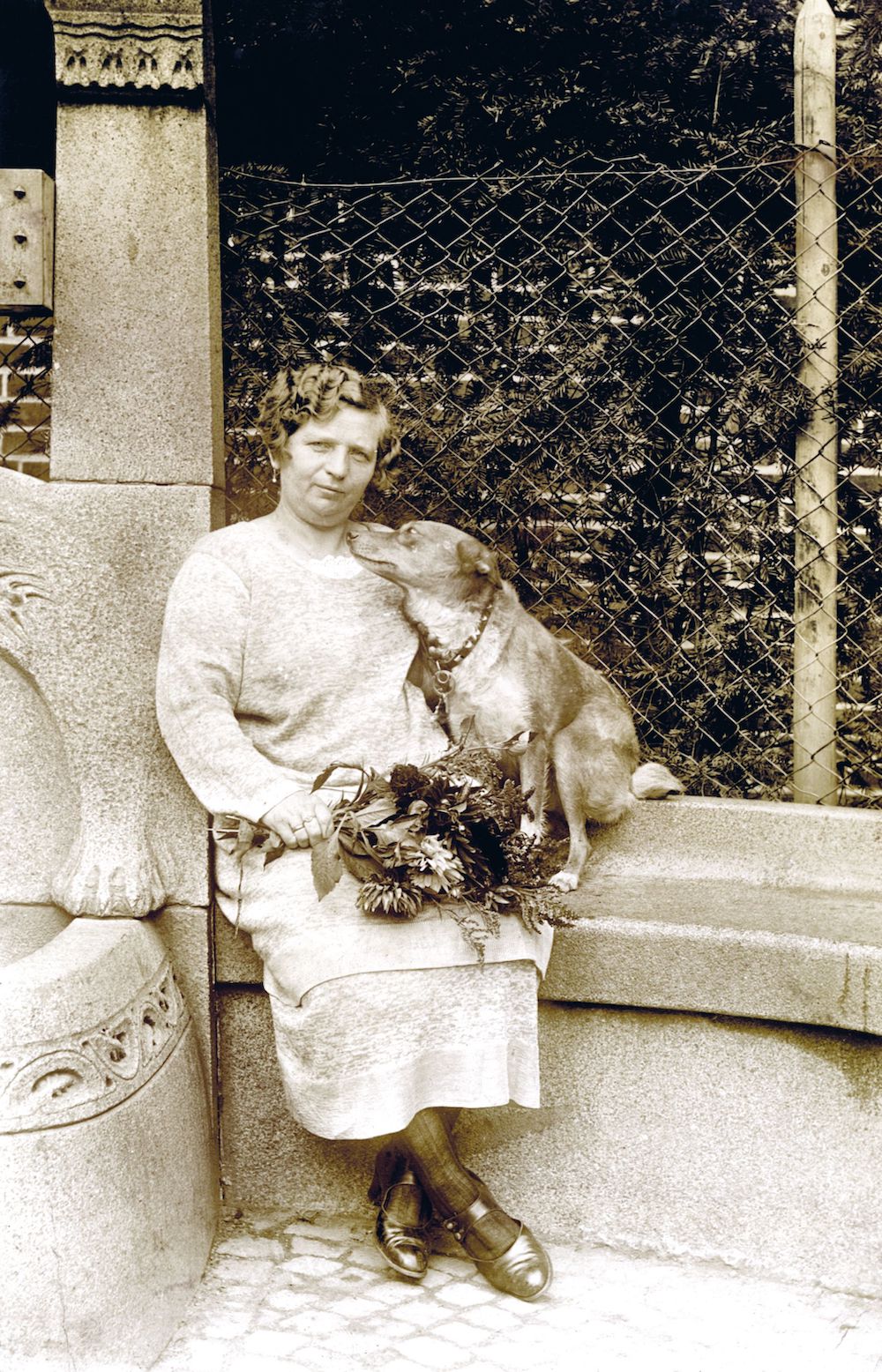
A few years ago, Dr. Stanley Coren did a study about pictures humans posted on the internet where they were hugging their dogs. In his judgment, a lot of those dogs were showing signs of stress. Did you come across any photos where you thought, “Oh, boy, that dog’s not doing great?”
I’m very familiar with that article, and I’ve read other articles that said you should not hug your dog. My personal experience is that most of the dogs I’ve had could not get close enough to me.
For someone else to just walk up and hug your dog I think would be very stressful for the animal. I think I have had a few photographs where you could tell the dog was a little stressed, and I think it was because of the situation in the photos, in the studio—or possibly the photographer giving instructions or not being patient.
But I had a great conversation with Gary Bart the other night. Gary… has one of the most incredible collections of photographs from the mid-19th century of dogs—and [specifically] performing dogs, which is incredible because any movement at that time would be blurry. He was talking about how he had read an early article from a photographer in the 19th century who said that one of his secrets to get the dogs calm and sit or even lay for a photograph was to feed them whisky.
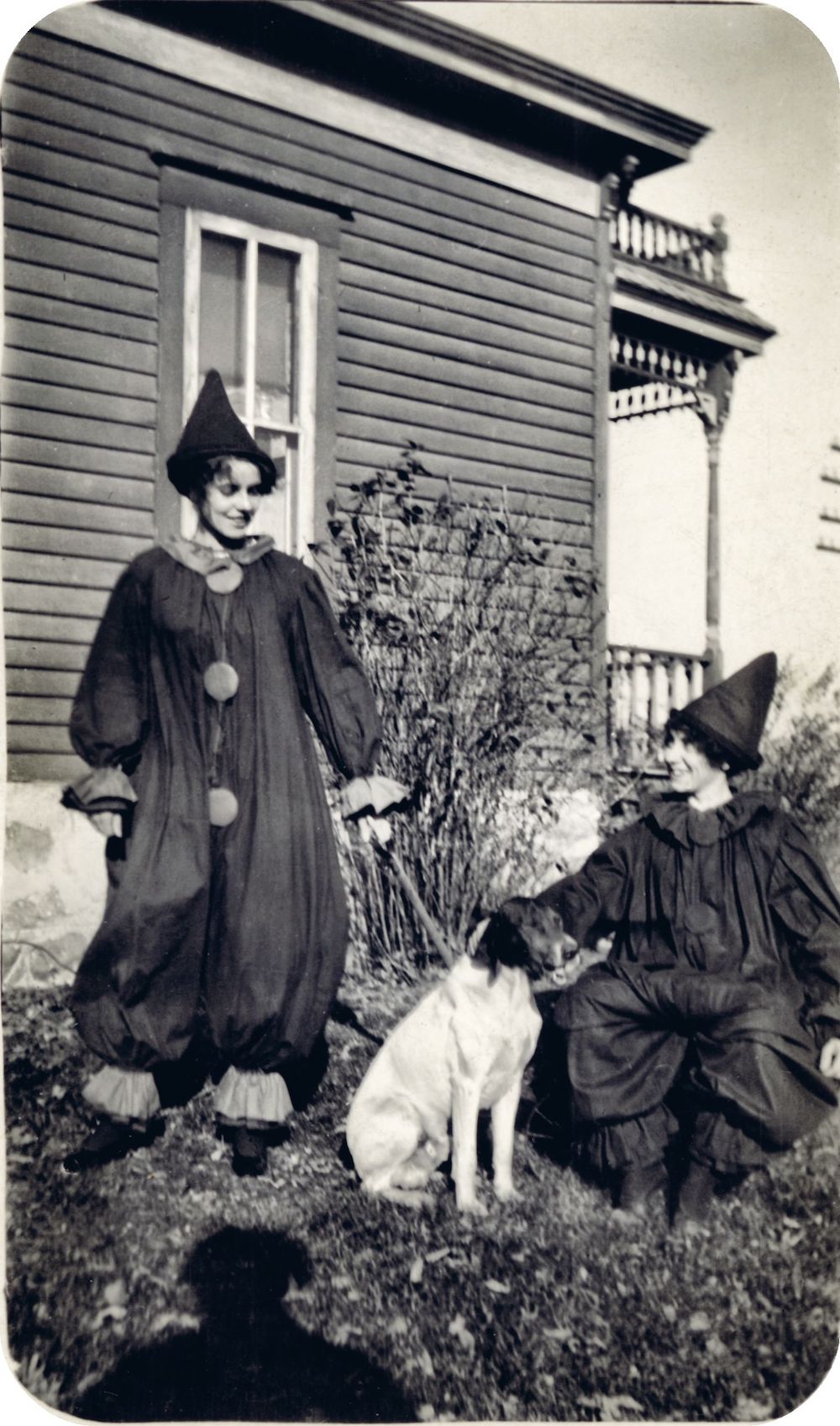
Oh, no.
Yes. And then another trick they had was to have a bird in a cage, and then just before they snapped the photo they would uncover the cage, and that way the dog would look toward the camera.
[I don’t know if] that’s where they got the expression “smile for the birdie” or “look at the birdie,” but those were two interesting things he told me. And it makes sense when I see a lot of these old photographs of dogs laying or looking like they’re sleeping on the floor, and I’m wondering now if many of those dogs were fed alcohol.
[Editor’s note: We can’t speak for 19th-century photographers, but we now definitely know that alcohol is bad for dogs. Never give it to them!]
People now sometimes argue about investment in dogs. They’ll question practices like, for example, throwing a birthday party for a dog. Did you come across any examples of people who, back when photography was more expensive, felt it was frivolous to photograph a dog?
At that time? I’m not sure. I think that there were a lot of people then who thought it was very frivolous to spend the money to have a dog photographed. Just as there are people today who think it’s frivolous to spend $3,000 on a dog’s surgery rather than put him to sleep. You’ll always encounter those people. But I think true dog lovers will look at any kind of behavior that’s positive, like a birthday party—it’s mostly for them.
We know the dog does not know it’s his birthday, but the dog does know that there’s some excitement going on, and there’s something special going on—and that’s important to the dog, too. Humans throw a birthday bash for a child’s first birthday, and the kid has no idea what’s going on. It’s for us, you know. And I think it’s part of us loving our animals or our children that we do this.
This interview has been edited for length and clarity.
The Dog-Person Questionnaire: Anthony Cavo
Anthony also answered our series of general queries about the human-dog bond’s role in his life, and why he’s particularly fond of Maui. Here are his responses:
What’s your earliest dog memory?
When I lived in Brooklyn, we had a white shepherd. Her name was Silver. And I remember her very well. I also remember, across the hall, my aunt had a little black shaggy dog named Midnight. Those two are my earliest recollection of dogs.
Silver was always in our home. I was three and four years old. I can tell you exactly where Silver loved to sleep in the apartment. It was a special corner that she loved, I think because it made her feel secure. But I do remember she didn’t like my sister, Ann. And it was because Ann always tried to ride her like a horse.
What qualities of Maui’s do you most admire?
He is a handful. He is a schnauzer and he is very typical of terriers. He is very territorial, and they have a very very big piece of property, and there are deer all day coming through the property. And half the property is fenced in. But that doesn’t stop him. If he’s in the window and he sees a bird in his yard, he has to get out and just run and chase everything out of that yard. And he’s so fast. He’s missing half of his right hind paw, probably due to the abuse he suffered as a puppy. But this dog will run with that leg held up. He is so tenacious, and he’ll hold that leg up and run on three legs, and he’s fast. And that’s what I just love about him. He’s a tough little rascal. He’s one of these dogs that you can’t help but love even though he’ll bark like mad. Even if he senses a dog walking past the house he’ll just go berserk. But I think that’s because he’s very tough and he’s survived what he has survived, and yet he’s just incredibly loving.
If Maui could speak, what do you think he would spend the most time talking about?
He’d spend the most time talking about how he wants to get the groundhog or one of the deer. I was at the house for a week with Maui. We had a very bad storm, and the river came up and knocked part of the fence down. There were about eight deer on his side of the fence, and of course I didn’t realize it when I opened the door that the fence had gone down. And once I opened the door and saw the deer, it was too late. He was out like a shot. And he was herding these deer. They couldn’t get out of the yard. He wouldn’t let them near the opening. And there were a few bucks, and I was scared to death that he was gonna get injured. I ran among them trying to get him to stop. He would not stop until all these deer were out of his yard.
[They hopped] the fence. One actually hit the fence so hard that it flipped up and he slid under it. But, yeah, Maui managed to clear his territory.
What’s the biggest lesson Maui has taught you?
I think the thing I learned from Maui is that it’s amazing that a dog can be so abused to the point where part of his tail is missing, and half of his foot is missing, and he is in such bad shape after he’s been treated terribly by humans that he had to be hospitalized—that he can become so loving and so attached to his family and me and protective and just a great companion. There’s no nastiness involved with him. For a dog to have been that abused and this loving is really remarkable. It’s not something a lot of people could get past in their life without it affecting their personality.
I think he sensed the love that he was given when he was first taken in and he was cared for and fed, and I think that’s the key right there. He could have gone many ways, but because he was taken in by a family that really wanted him and loved him and took care of him immediately, I think that’s what I would attribute it to.
What is Maui’s best trick?
I think his best trick is when I go there and he jumps up into my arms. That’s what I think his best trick is. It thrills me.
What do you think is the key to a great dog-human relationship?
I think that if you truly love a dog, they know it. And you will get that back tenfold. If you’re kind to your dog, you take them with you, you talk to them. Talking to them, I think, is really key. I talk to the dogs all the time. And although they may not understand what I’m saying, they’re engaged. And they look at you and they tell your tone of voice.
And I think patience is really key, especially with a new dog. Not every dog is the same, and you have to treat them differently. There’s no recipe; there’s no blueprint. Every dog is different. But I think if you speak to them very kindly, and you speak to them all the time, and you just allow them to be near you, I think you will be rewarded beyond what you can imagine.
Questions and answers have been edited for length and clarity.

